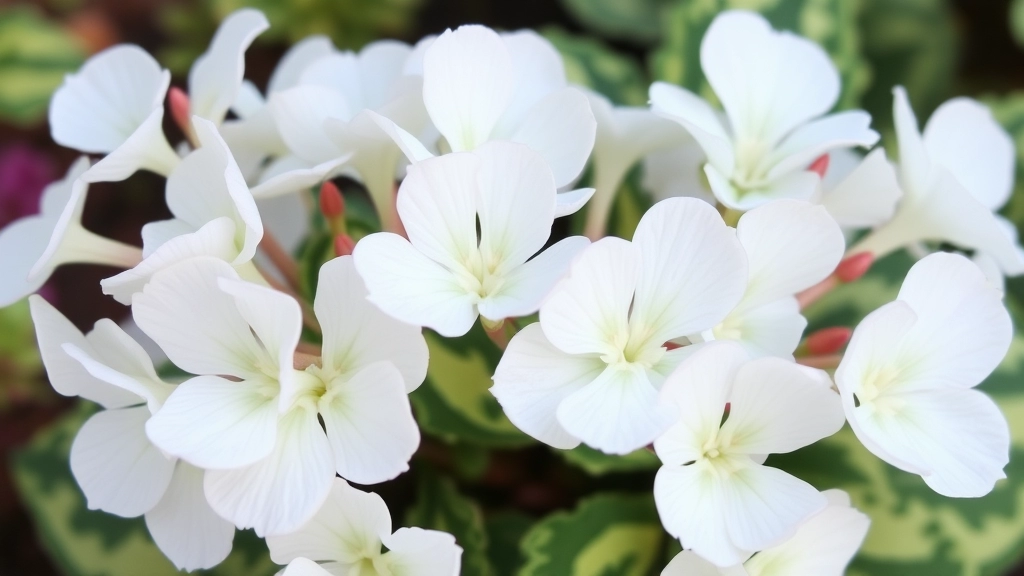White Variegated Kalanchoe Care Guide
Hey there! If you’ve ever been curious about the stunning White Variegated Kalanchoe, you’re in the right place. This unique plant not only adds a touch of elegance to any space but also requires minimal care, making it perfect for both novice and seasoned gardeners. Let’s dive into how you can create the perfect conditions for your White Variegated Kalanchoe to thrive.
Key Factors for Thriving Kalanchoe
-
Light:
First off, ensure your Kalanchoe gets plenty of indirect sunlight. Too much direct sun can scorch its delicate leaves, while too little will stunt its growth.
-
Watering:
Watering is another key factor; keep the soil slightly moist but avoid over-watering, as this can lead to root rot.
With these simple tips, you’ll have a vibrant and healthy White Variegated Kalanchoe in no time!
Are you searching for a striking plant to enhance your home decor? The White Variegated Kalanchoe might be the perfect choice for you. This succulent is not only visually appealing but also relatively easy to care for.
## Unique Features
The White Variegated Kalanchoe stands out with its vibrant green leaves adorned with creamy white edges. This variegation creates a stunning contrast that can brighten any space.
– **Leaf Structure**: The leaves are thick and fleshy, typical of succulents, which allows the plant to store water efficiently.
– **Flowering**: During its blooming season, which usually occurs in late winter to early spring, the plant produces clusters of small, tubular flowers that can range from white to soft pink.
– **Size**: Typically, this plant grows to a height of about 30 cm (12 inches), making it an ideal size for both indoor and outdoor settings.
## Growth Habit
The growth habit of the White Variegated Kalanchoe is compact and bushy, making it an attractive addition to any plant collection.
– **Light Requirements**: It thrives in bright, indirect sunlight, which enhances its variegated colour.
– **Temperature Tolerance**: This succulent prefers warmer temperatures, ideally between 18°C to 24°C (65°F to 75°F).
For more detailed care tips, you might find the [Ultimate Guide to Variegated Kalanchoe Care Tips](https://planthq.org/ultimate-guide-to-variegated-kalanchoe-care-tips/) useful. Additionally, if you’re interested in other types of Kalanchoe, check out this [Comprehensive Guide to All Types of Kalanchoe Varieties](https://planthq.org/all-types-of-kalanchoe-varieties-care-tips-growing-guide/).
Ideal Growing Conditions for White Variegated Kalanchoe
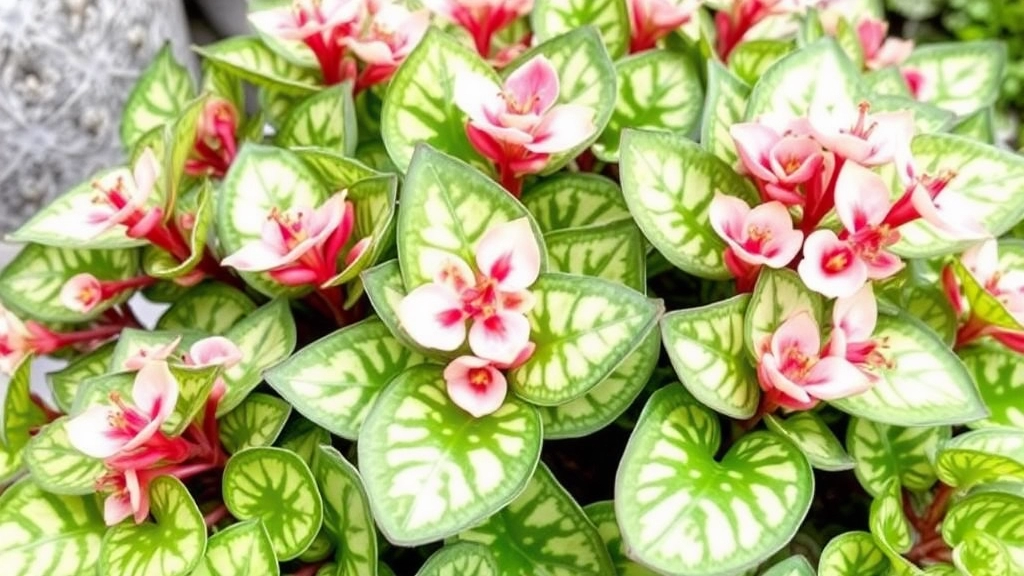
So, you’ve got your heart set on a White Variegated Kalanchoe? Great choice! But before we dive into the nitty-gritty of care, let’s chat about the ideal growing conditions that’ll keep your plant thriving.
First off, these beauties love bright, indirect sunlight.
- Location: A south or east-facing window is perfect.
- Light Duration: Aim for about 6 hours of light daily.
Too much direct sun can scorch those lovely leaves, so keep an eye on them.
Next up, let’s talk temperature.
- Ideal Range: They prefer temperatures between 15°C to 25°C.
- Avoid: Cold drafts or sudden temperature changes.
Humidity isn’t a big deal for Kalanchoes. They’re pretty adaptable. Just keep them in a spot with average humidity, and they’ll be happy.
Now, let’s not forget about the soil.
- Type: A well-draining cactus or succulent mix is your best bet.
- pH: They thrive in slightly acidic to neutral soil (around 6.0 to 7.0).
Lastly, make sure your pot has drainage holes. Standing water is a no-go for these plants!
When considering how to plant and pot your White Variegated Kalanchoe, it’s essential to ensure that you provide the right environment for this beautiful succulent to thrive. Many new plant owners often wonder about the best practices for potting and soil selection.
Choosing the Right Pot
– **Drainage is Key**: Select a pot with drainage holes to prevent waterlogging, which can lead to root rot.
– **Size Matters**: Aim for a pot that is slightly larger than the root ball of your plant. A pot that’s too big can hold excess moisture.
– **Material Choice**: Terracotta pots are a great option as they allow for better airflow and moisture control.
Selecting the Right Soil
– **Well-Draining Soil**: Use a cactus or succulent potting mix, which is designed to provide excellent drainage. For more detailed guidance, check out our [best soil for Kalanchoe Blossfeldiana care tips](https://planthq.org/best-soil-for-kalanchoe-blossfeldiana-care-tips/).
– **DIY Mix**: If you prefer to make your own, combine regular potting soil with perlite or coarse sand to enhance drainage.
Planting Steps
1. **Prepare the Pot**: Add a layer of gravel or small stones at the bottom for additional drainage.
2. **Add Soil**: Fill the pot with your chosen soil mix, leaving enough space for the plant.
3. **Position the Plant**: Gently remove the Kalanchoe from its nursery pot and place it in the centre of the new pot.
4. **Fill and Firm**: Add more soil around the plant, ensuring it is secure and upright, then lightly press down to eliminate air pockets.
5. **Watering**: Water the plant lightly after potting to help settle the soil but avoid soaking it. For ongoing care, refer to our [complete guide to Kalanchoe plant care](https://planthq.org/complete-guide-to-kalanchoe-plant-care/).
Watering and Fertilizing Guidelines
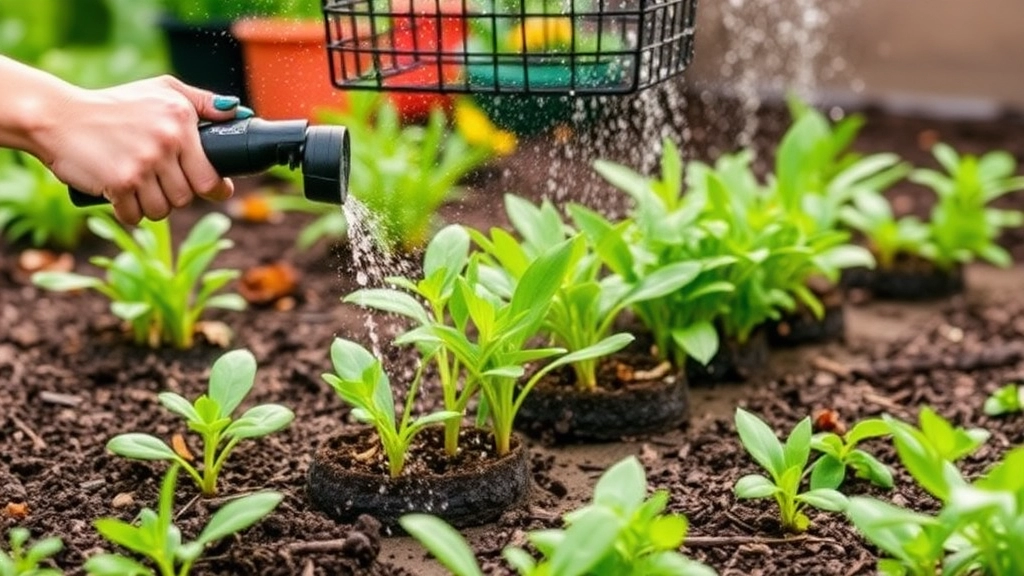
After understanding the characteristics and ideal growing conditions for your White Variegated Kalanchoe, it’s crucial to focus on proper watering and fertilizing practices to ensure your plant thrives.
Watering Tips
One of the most common concerns for plant owners is how often to water their Kalanchoe. Overwatering can lead to root rot, while underwatering can cause the leaves to wilt. Here’s how to strike the right balance:
- Check the Soil: Always check the top inch of the soil. If it feels dry, it’s time to water.
- Watering Frequency: Typically, watering every two to three weeks is sufficient, depending on the season.
- Watering Method: Water deeply but infrequently. Ensure excess water drains out of the pot to avoid soggy roots.
- Seasonal Adjustments: In the growing season (spring and summer), you may need to increase the frequency. In contrast, reduce watering in the dormant months (autumn and winter).
Fertilizing Guidelines
Fertilizing your White Variegated Kalanchoe can promote vibrant growth and enhance its unique color patterns. Here’s how to do it effectively:
- Type of Fertilizer: Use a balanced, water-soluble fertilizer with an NPK ratio of 10-10-10 or similar.
- Frequency: Fertilize every 4-6 weeks during the growing season. Skip fertilization in the winter months.
- Dilution: Always dilute the fertilizer to half-strength to avoid burning the roots.
- Application Method: Apply the fertilizer directly to the soil, avoiding the leaves to prevent leaf burn.
By adhering to these watering and fertilizing guidelines, your White Variegated Kalanchoe will flourish beautifully.
Common Pests
- Mealybugs
- These small, white, cottony pests often hide in the leaf axils and stem joints.
- They suck the sap from the plant, leading to yellowing leaves and stunted growth.
- Aphids
- Tiny and green, aphids can congregate on new growth.
- They also feed on sap, causing distortion and wilting of leaves.
- Spider Mites
- These microscopic pests thrive in dry conditions.
- Look for fine webbing on the undersides of leaves, which indicates an infestation.
Common Diseases
- Powdery Mildew
- A fungal disease that appears as a white powdery coating on leaves.
- It thrives in humid conditions and can weaken your plant.
- Root Rot
- Caused by overwatering, root rot leads to wilting and yellowing leaves.
- Ensure your pot has good drainage to prevent this issue.
- Leaf Spot
- This disease manifests as dark spots on leaves, often caused by fungal infections.
- It can spread quickly if not addressed.
Prevention and Treatment
- Regular Inspections
- Check your plant weekly for signs of pests or disease.
- Proper Watering
- Avoid overwatering to prevent root rot.
- Good Air Circulation
- Ensure your plant is in a well-ventilated area to reduce humidity and deter pests.
- Neem Oil
- A natural pesticide that can help manage infestations without harming your plant.
For more detailed information on caring for your Kalanchoe, check out our [Complete Guide to Growing and Caring for Kalanchoe Pink Butterflies](https://planthq.org/complete-guide-to-growing-and-caring-for-kalanchoe-pink-butterflies/) and our [Ultimate Guide to Fuzzy Kalanchoe Care Tips](https://planthq.org/ultimate-guide-to-fuzzy-kalanchoe-care-tips/).
VI. Pruning and Maintenance
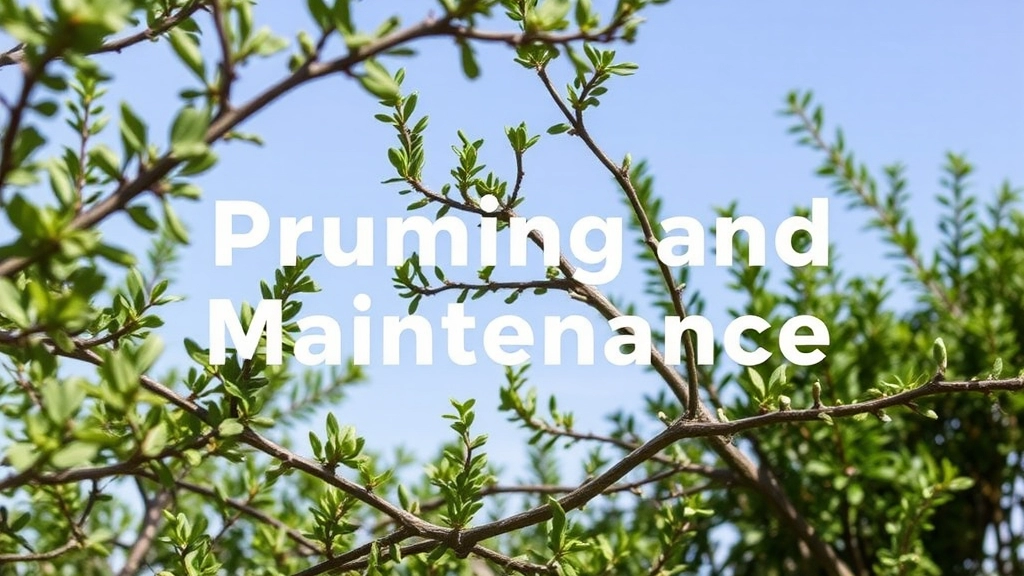
So, you’ve got your White Variegated Kalanchoe thriving, but how do you keep it looking its best?
Pruning and maintenance are key to ensuring your plant not only stays healthy but also flourishes.
Why Prune?
- Encourages Growth: Pruning can stimulate new growth, making your plant bushier and more vibrant.
- Removes Dead Leaves: Snipping away any dead or yellowing leaves keeps your plant looking tidy.
- Prevents Disease: It helps in reducing the risk of diseases by improving air circulation.
When to Prune
- Springtime: The best time to prune is during the spring when the plant is gearing up for its growing season.
- After Blooming: If your Kalanchoe has flowered, give it a trim afterward to encourage new growth.
How to Prune
- Use Clean Tools: Always use sharp, clean scissors or pruning shears to avoid spreading any potential diseases.
- Cut Above a Leaf Node: This encourages new growth from the node below.
- Remove Excess Stems: If your plant is getting leggy, don’t hesitate to trim back those long stems.
Maintenance Tips
- Dust the Leaves: Wipe the leaves with a damp cloth to keep them clean and allow for better photosynthesis.
- Check for Pests: Regularly inspect your plant for any signs of pests or disease. Early detection is key!
- Rotate Your Plant: Give your Kalanchoe a gentle twist every few weeks to ensure even growth.
By keeping up with pruning and maintenance, you’ll not only enhance the beauty of your White Variegated Kalanchoe but also keep it healthy and vibrant.
Propagation Methods
As we explore the propagation methods for the White Variegated Kalanchoe, it’s essential to remember that this process can be both rewarding and straightforward. Many enthusiasts wonder how to expand their collection or share this beautiful plant with friends.
Propagation Techniques
- Leaf Cuttings
- Select a healthy leaf from the parent plant.
- Allow it to dry for a few hours to form a callous.
- Place the leaf in well-draining soil, burying the cut end.
- Water lightly and keep in indirect light.
- Roots should develop in a few weeks.
- Stem Cuttings
- Choose a healthy stem with a few leaves.
- Cut just below a leaf node.
- Let the cutting dry for a day to prevent rot.
- Plant it in a pot with cactus mix or well-draining soil.
- Water sparingly until roots form.
- Offsets
- Look for small offsets at the base of the plant.
- Gently twist or cut them away from the parent.
- Allow them to dry for a few hours.
- Plant in a separate pot with suitable soil.
Tips for Successful Propagation
- Use clean, sharp tools to prevent disease.
- Ensure the soil is well-draining to avoid waterlogging.
- Provide bright, indirect light during the rooting process.
- Be patient; some methods may take longer than others.
By employing these propagation methods, you can easily expand your White Variegated Kalanchoe collection. For more detailed guidance, check out our step-by-step guide on Kalanchoe propagation from leaves and learn about the best practices for propagating Kalanchoe Tomentosa.
Seasonal Care Tips for White Variegated Kalanchoe
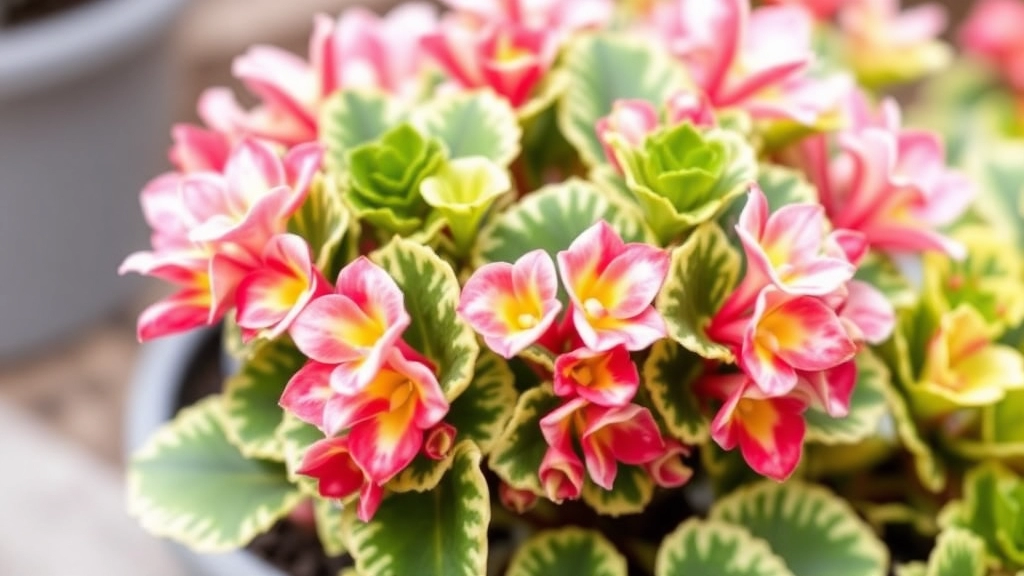
So, you’ve got your White Variegated Kalanchoe thriving, but how do you keep it looking fabulous throughout the year?
Seasonal Adjustments:
- Spring:
- As the days get longer, your Kalanchoe will be waking up from its winter slumber.
- Increase watering slightly but ensure the soil dries out between waterings.
- Consider a balanced fertiliser to give it a boost.
- Summer:
- This is the growing season!
- Keep it in bright, indirect sunlight.
- Water more frequently, but don’t let it sit in soggy soil.
- You might want to mist the leaves occasionally to keep humidity levels up.
- Autumn:
- As temperatures drop, reduce watering.
- It’s time to cut back on fertilising.
- Check for pests, as they might be more active during this transition.
- Winter:
- Your Kalanchoe will enter a dormancy phase.
- Water sparingly; once every few weeks should do.
- Keep it in a warm spot away from drafts.
Extra Tips:
- Always check the soil moisture before watering.
- If you notice any leaves dropping or wilting, it might be a sign of over or under-watering.
- Rotate your plant occasionally to ensure even growth.
Benefits of Growing White Variegated Kalanchoe
Are you considering adding the White Variegated Kalanchoe to your collection? You’re not alone. Many plant enthusiasts are drawn to this stunning succulent for various reasons.
Aesthetic Appeal
First and foremost, the White Variegated Kalanchoe is a visual delight.
- Its unique white and green foliage creates a striking contrast that can brighten any space.
- The vibrant flowers add a splash of colour, making it an ideal choice for indoor décor.
Low Maintenance
One of the biggest advantages of the White Variegated Kalanchoe is its low maintenance requirements.
- It thrives on neglect, making it perfect for busy individuals.
- This plant is drought-tolerant, meaning you won’t need to water it frequently.
Air Purification
Did you know that plants can improve indoor air quality?
- The White Variegated Kalanchoe can help purify the air by absorbing toxins.
- It releases oxygen, contributing to a healthier living environment.
Versatile Use
This versatile plant can be used in various settings.
- It looks fantastic in pots, hanging baskets, or as part of a larger garden arrangement.
- The Kalanchoe can also be a thoughtful gift for plant lovers.
Educational Opportunity
For those interested in botany, growing Kalanchoe provides an excellent learning experience.
- You can explore its unique growth patterns and care requirements.
- It’s a great way to teach children about plant care and responsibility.
For more detailed care instructions, check out our complete care guide for Kalanchoe Flaming Katy. Additionally, if you’re interested in propagation methods, our step-by-step guide on propagating Kalanchoe Pink Butterflies can be very helpful.
FAQs About White Variegated Kalanchoe
What are the ideal growing conditions for White Variegated Kalanchoe?
White Variegated Kalanchoe thrives in bright, indirect sunlight. A south or east-facing window is ideal. Aim for about 6 hours of light daily. The preferred temperature range is between 15°C to 25°C, and the plant should be kept away from cold drafts or sudden temperature changes. Use a well-draining cactus or succulent mix and ensure the pot has drainage holes.
How often should I water my White Variegated Kalanchoe?
Watering every two to three weeks is usually sufficient, depending on the season. Always check the top inch of the soil; if it feels dry, it’s time to water. During the growing season (spring and summer), you may need to increase the frequency. Reduce watering in the dormant months (autumn and winter).
What type of fertilizer should I use, and how often should I fertilize?
Use a balanced, water-soluble fertilizer with an NPK ratio of 10-10-10 or similar. Fertilize every 4-6 weeks during the growing season and skip fertilization in the winter months. Always dilute the fertilizer to half-strength to avoid burning the roots and apply it directly to the soil.
Why is pruning important, and how should I do it?
Pruning encourages new growth, removes dead leaves, and prevents disease by improving air circulation. The best time to prune is during the spring or after blooming. Use clean, sharp scissors or pruning shears, and cut above a leaf node to encourage new growth. Remove any excess stems if the plant becomes leggy.
What are the seasonal care tips for White Variegated Kalanchoe?
Spring: Increase watering slightly and consider using a balanced fertilizer.
Summer: Keep in bright, indirect sunlight and water more frequently. Mist the leaves occasionally.
Autumn: Reduce watering and cut back on fertilizing. Check for pests.
Winter: Water sparingly and keep the plant in a warm spot away from drafts.
How can I maintain my White Variegated Kalanchoe’s health?
Regularly dust the leaves with a damp cloth to allow for better photosynthesis. Inspect the plant for pests or diseases frequently. Rotate the plant occasionally to ensure even growth. By adhering to these maintenance tips, your plant will remain healthy and vibrant.
References
-
How to Grow Kalanchoe Indoors
-
Kalanchoe Care: Growing and Caring for Kalanchoe Plants
-
Kalanchoe: How to Grow and Care for Kalanchoe Plants
